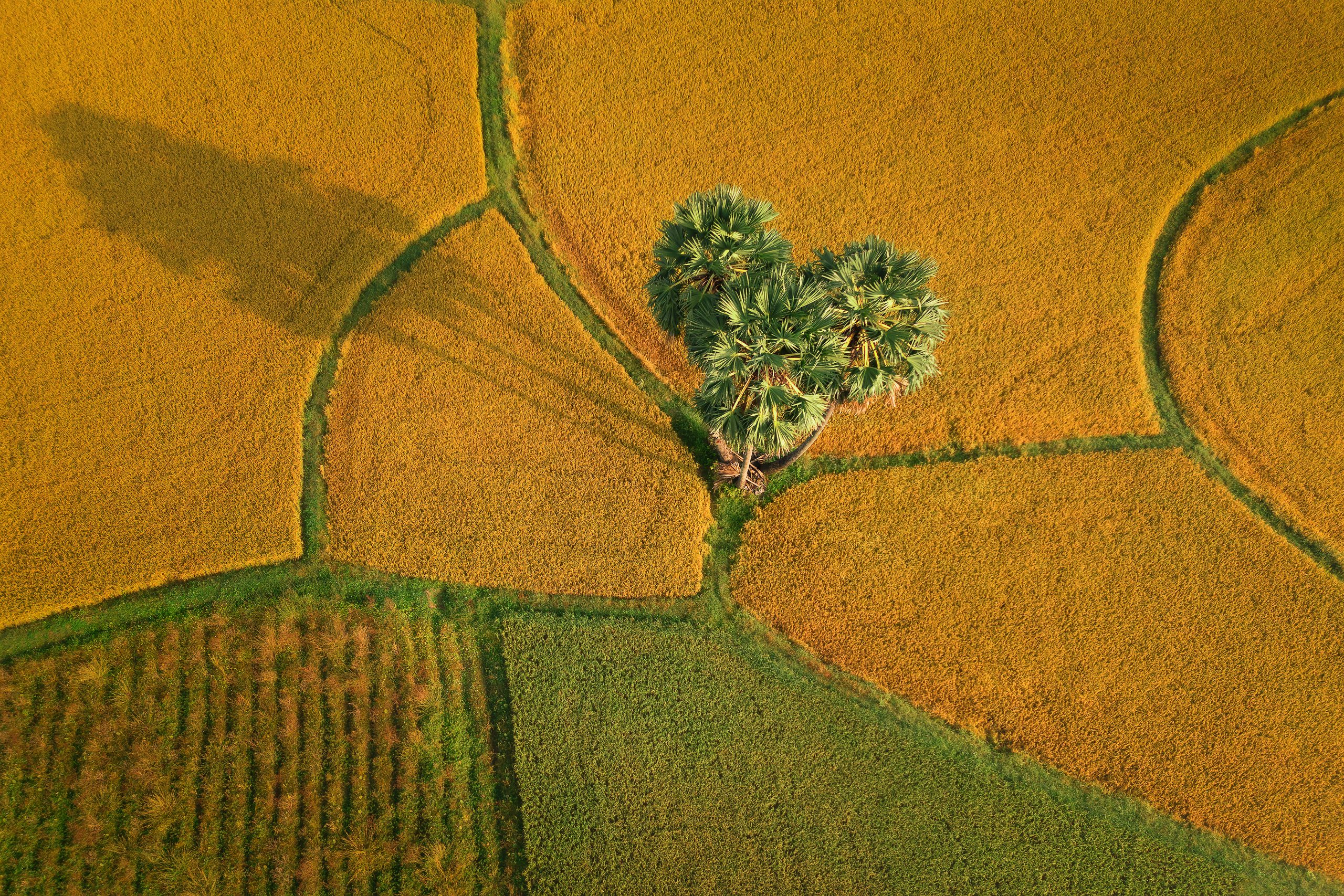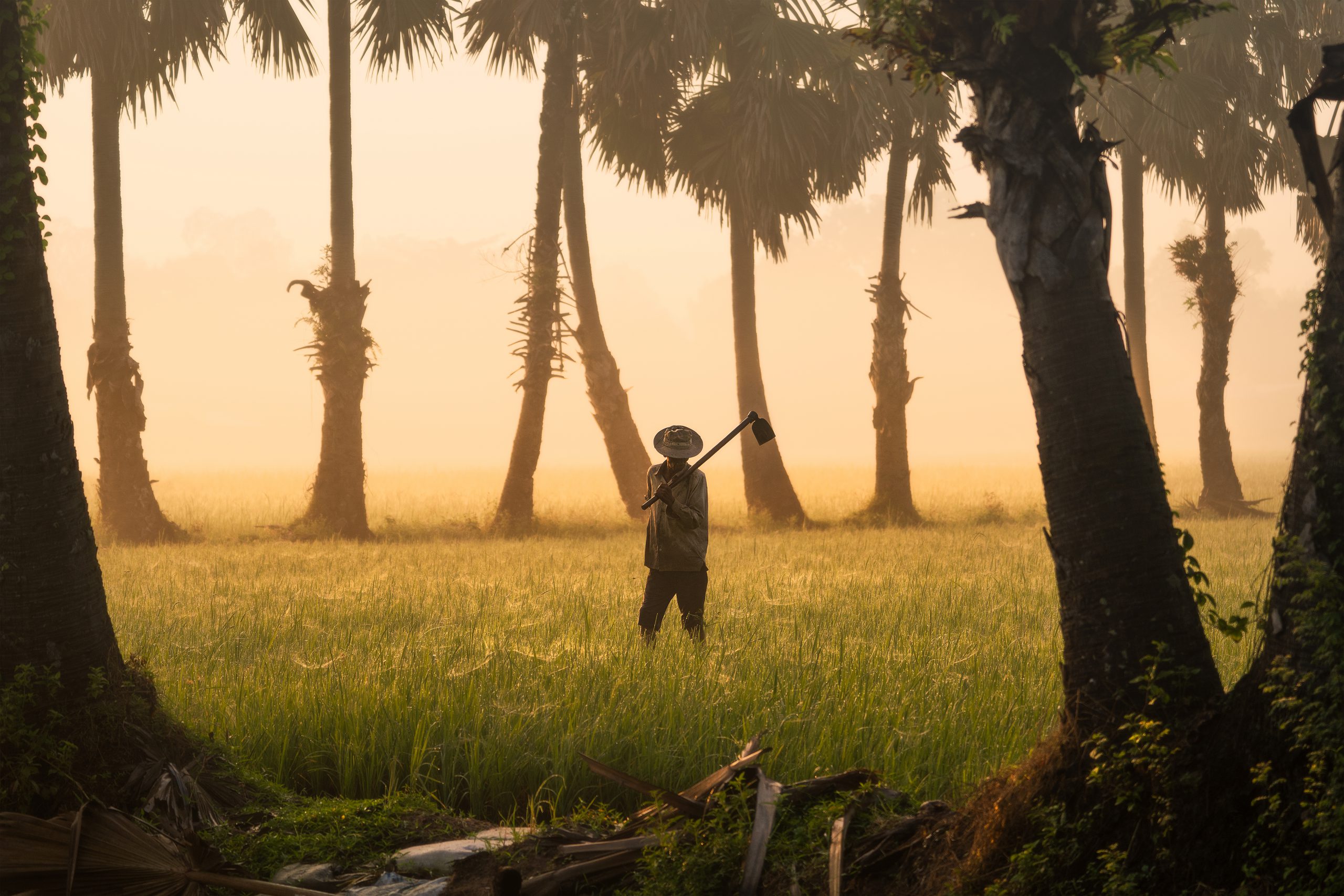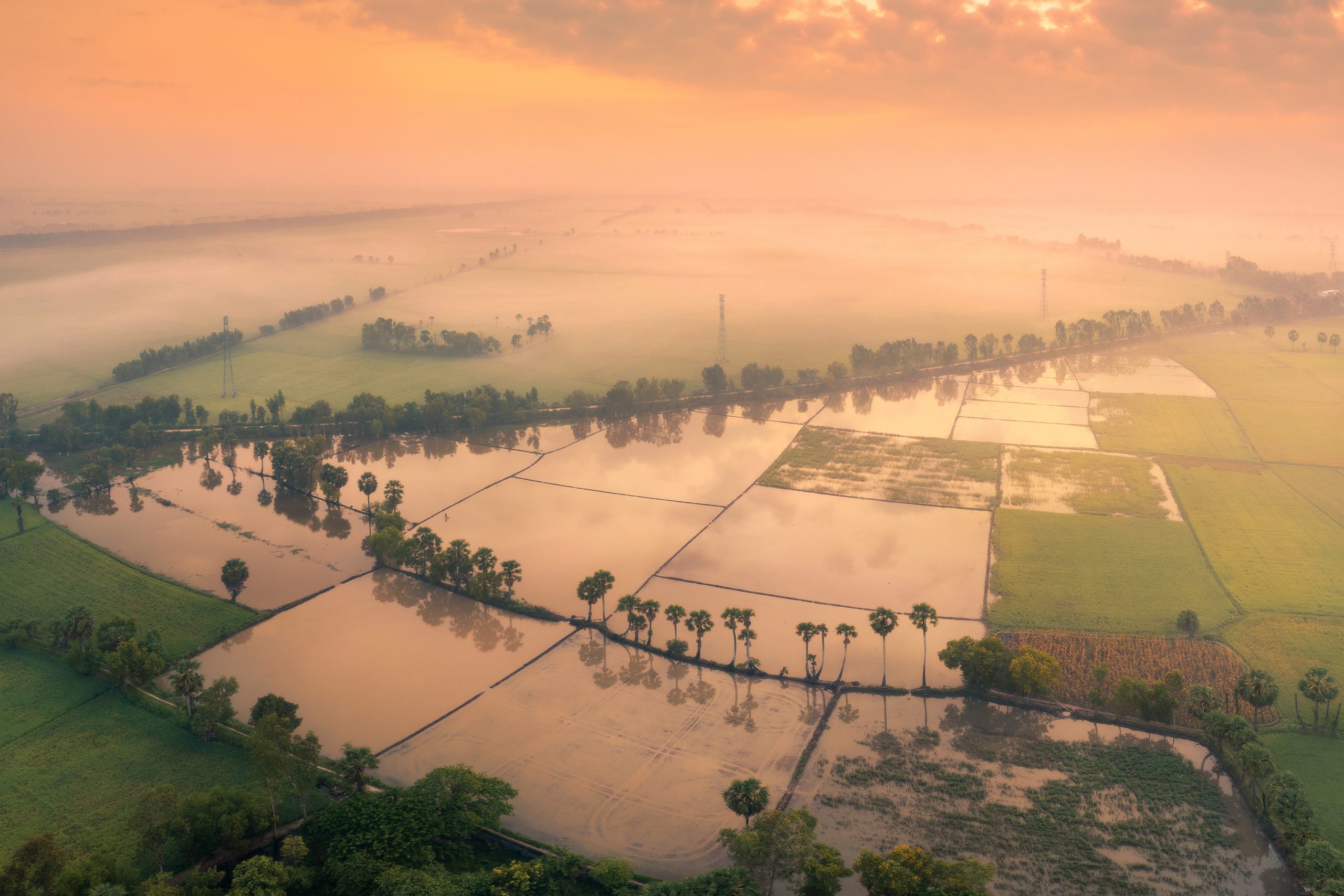Story: Huynh Phuong
Photos: Cao Ky Nhan
In An Giang province, palm trees have been an integral part of the daily life and livelihood of local people, especially the Khmer community, for generations.

Palm trees are cultivated in several provinces, including Long An, Dong Thap, Kien Giang, and particularly in An Giang. The Seven Mountains area in An Giang is considered the homeland of this species, with over 35,000 trees (as of 2023). Locals often refer to the Seven Mountains as “That Son”, a legendary range consisting of seven disjointed peaks stretching across the town of Tinh Bien and Tri Ton district. Thanks to its unique climate and soil, this region is ideal for growing palm trees, which add a simple and poetic charm to the landscape.
The land of palm trees
Indeed, it is not an overstatement to regard the Seven Mountains region as the “heart of palm trees” in the remote Southwest frontier. In the dry season, rows of lush palm trees stretch toward the sky, standing resilient against the sun and wind, symbolizing the endurance and perseverance of the Khmer people. Wandering along the roads in Tinh Bien, visitors are amazed by the beauty of the “twin palms” in the vast rice fields in Van Giao commune, or the sight of straight rows of tall Palmyra palms casting their shade in An Nong commune. Tourists can easily witness scenes of cattle crossing the Palmyra palm fields in the dry season or the “dance” of locals skillfully climbing the palm trees to collect sweet sap from the flowers’ pistils. Particularly, during the flooding season, photographers flock to the Palmyra palms behind the Khmer temple named “Sà-Đách-Tót” in Vinh Trung commune (Tinh Bien). Many beautiful photographs were born at this site, featuring scenes of fishermen casting nets on the lake, which reflects the legendary rows of palm trees.

Dining on the ground, working in the heavens
The Vietnamese name for Palmyra palms—”thốt nốt”—might sound unusual to some ears; it originates from the Khmer word “th’not”, which some locals mispronounced as “thốt nốt”. This tree has a straight trunk, an average lifespan of up to 100 years, and can grow up to 30 meters tall. All of its leaves are concentrated at the top, forming a round canopy. The tree starts to bear fruit and produce sweet sap when it is about 30 years old. An interesting fact about male palm trees is that they feature flowers but do not bear fruit, so people often climb them to collect sap from the flower pistils. Sweet palm sap is collected during the dry season, from November to April of the lunar calendar annually. The harvest season can be earlier or later depending on the weather. Climbers must be healthy, careful, hardworking, skilled in climbing high under the scorching sun, and proficient in cutting the bunches of fruit to collect the sap.

A local delicacy
The locals transform sweet palm sap into sugar by using a cast iron skillet over a fire in a red clay stove. Ten liters of sweet palm sap are simmered for several hours to produce 1kg of naturally sweet sugar without additives. The process involves continuous stirring until the sugar thickens and attains its characteristic yellow color. It is immediately removed from the heat to prevent burning, poured into a cylindrical mold, and cut into slices. The slices are wrapped in Palmyra palm leaves, following the traditional Vietnamese method of making Tet cakes (Vietnamese cylindrical sticky rice cakes).
In addition to the main product of palm sugar, locals also enjoy fresh palm juice. Each sugar palm fruit is about 20cm in diameter, roughly the size of a Siam coconut. The young fruit are green and turn purple-brown or black as they mature. The flesh is a layer of thick, soft, creamy white pulp. Splitting open a Palmyra palm fruit and pouring its juice into a glass, then adding some shredded palm flesh and a few cubes of ice creates a refreshingly sweet drink with a fragrant aroma that offers cool relief with every sip. Meanwhile, the pulp of the mature fruit, which turns a fragrant yellow reminiscent of ripe jackfruit, is also used to make flour for baking honeycomb cakes and cooking traditional sweet soups.
The Seven Mountains region is a popular tourism destination. Rows of towering Palmyra palm trees welcome travel-lovers, allowing endless photography opportunities to capture the beauty of the simple local lifestyle. The palm tree is also an inseparable part of Khmer people’s lives, primarily cultivated for its sap, sugar, and flour, which provide a stable income for the community. While many traditional crafts are fading, palm sugar production remains stable, forming a specialty in the Seven Mountains area in particular and An Giang province in general.










